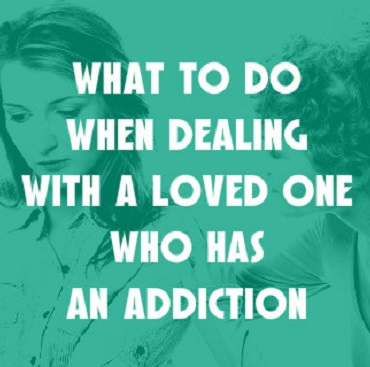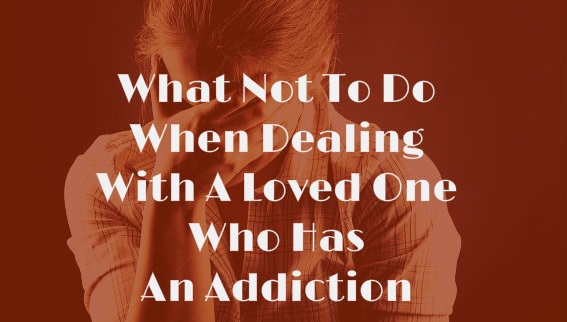News accounts of the party drug known as “molly” seem to have been replaced recently with reports of a much more frightening drug called krokodil. Health officials are now concerned that the synthetic drug, which is said to deliver a heroin-like high, has made its way into the United States. Physicians in Utah, Arizona, and, most recently, Illinois, have reported possible cases of krokodil use, putting drug addiction and health experts on alert.
Krokodil Facts
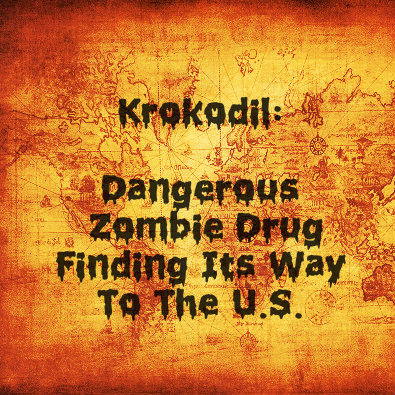 Krokodil is a homemade version of a drug called desomorphine, which was developed in the 1930s as a morphine alternative. However, researchers found that it was up to 10 times stronger than morphine, so its use was discontinued. Illicit drug users now re-create desomorphine by using a base made from codeine, a narcotic used to relieve pain and suppress coughs.
Krokodil is a homemade version of a drug called desomorphine, which was developed in the 1930s as a morphine alternative. However, researchers found that it was up to 10 times stronger than morphine, so its use was discontinued. Illicit drug users now re-create desomorphine by using a base made from codeine, a narcotic used to relieve pain and suppress coughs.
The drug, which Time has called a “dirty cousin of morphine,” also contains a dangerous mix of alcohol, paint thinner, gasoline and lighter fluid. The mixture includes red phosphorus as well, a substance used in the striking pads of matchboxes. Iodine is another ingredient — one that often leaves addicts enveloped in a tell-tale heavy iodine odor that, as one Russian physician noted, can’t be washed out of clothing.
Krokodil can be easily concocted at home in about 30 minutes. Users inject krokodil wherever they find available veins on their body, from their head to their feet. Injecting the drug delivers a high quickly — in as little as five minutes. This is in contrast to the one to two hours it can take to get high from drugs in pill or capsule form.
This dangerous substance delivers a more potent high than heroin. However, the euphoric feeling doesn’t last as long, at anywhere from 90 minutes to two hours. Addiction occurs quickly, catapulting users into a never-ending cycle that moves from cooking the drug to getting high to cooking the next batch. Users interviewed for news accounts have reported going for days without sleep as they binged on krokodil.
Krokodil Effects
Anyone who has seen the sensational-sounding online headlines about this drug addiction may have written them off as attempts by websites to generate traffic: “Zombie apocalypse drug reaches U.S.” or “Krokodil –The drug that eats junkies.” However, headlines like these are not exaggerations. The drug gets its name from its effect on the skin and underlying tissue. It’s believed the damage is caused not by the psychoactive ingredient desomorphine, but rather the caustic substances used in the concoction. These chemicals destroy blood vessels and tissue. Unsanitary drug cooking and injection practices also likely play a role in the destruction.
After krokodil is injected, blood vessels burst and tissue surrounding the injection site dies. As a result, the skin takes on a greenish, scaly appearance that mimics that of a crocodile, or krokodil in Russian. The process leads to open, festering wounds and infections as the skin rots from the inside out, eventually causing gangrene. Those with an addiction to krokodil can be left with dead skin that peels away to reveal tissue and bone underneath. Many users experience blood poisoning. The damage addicts suffer typically requires intensive wound care or skin grafts. Amputations are common.
Over time, the drug’s acidity also dissolves porous bone, especially in the jawbone and teeth. The effect has been compared to “meth mouth,” which is the unsightly rotting of the gums and teeth often seen in methamphetamine addicts. Chronic krokodil abusers frequently lose their teeth.
The average life expectancy of a krokodil addict is estimated to be very short at only two to three years. However, even those who are able to overcome the addiction are left with lasting and devastating physical effects. Krokodil causes brain damage in chronic users, leaving them with speech impediments and impaired motor skills, often in the form of jerky movements. In fact, the disjointed movements combined with addicts’ skin and tissue injuries have caused some to deem krokodil the “zombie” drug.
Krokodil In The U.S.
According to a report published in the Journal of Addictive Diseases, this homemade drug is believed to have first been used in Russia in 2003. For years, its use was confined largely to Russia and the surrounding countries that had been part of the Soviet Union. Experts estimate about 100,000 Russians have become addicted to krokodil and other illicit homemade drugs. By 2011, krokodil began moving into Germany and Norway. The ingredients are widely available, and users freely circulate recipes that make it easy to create batches on a home stove. It also costs a fraction of what users pay for heroin.
Currently, the U.S. incidents are being classified as possible cases; although the physical symptoms appear to be consistent with krokodil use, drug addiction experts have not been able to obtain samples of the drug, nor have they been able to get blood or urine samples that might confirm its use. Obtaining positive samples from addicts may be challenging because the body metabolizes the drug so quickly.
Krokodil Treatment
Because of the very serious side effects, treatment must start as soon as possible. Treating this addiction is a complex process, requiring a joint effort by physicians and addiction professionals. The obvious physical symptoms may require emergency care, making hospitalization necessary. As medical staff members try to stem the physical damage, a skilled addictions team will need to address the severe withdrawal symptoms.
Although the drug mimics the euphoric high of heroin, there are differences regarding withdrawal. Heroin’s physical withdrawal symptoms last about a week, while krokodil’s can draw out for as long as a month. Russian addiction experts say it causes such intense pain that it’s common to tranquilize patients during withdrawal. Addicts also experience seizures, fever, and vomiting.
Following withdrawal, a drug rehab team will start the addict on an intensive therapy program. Treatment will likely include extended inpatient rehab along with individual and group therapy. Long-term aftercare, including sober living, may also be part of the recovery plan. In addition, an addict might need physical or occupational therapy to address the physical aftermath of this addiction.
Krokodil addiction must be treated immediately by professional addiction treatment specialists. If you or someone you love is using this extremely dangerous substance, don’t wait to get help. Contact a drug addiction recovery center today.
Read More Russia’s Deadly Krokodil
Inhalants are a broad range of common, commercially available chemicals that get grouped together because they can function as makeshift drugs when inhaled through the nose or mouth. Use of these chemicals can trigger a number of serious or potentially fatal short- and long-term health problems. In a study published in 2013 in the journal Addiction, a team of Australian researchers assessed the prospects for eventual recovery from the nervous system-related damage associated with inhalant use. These researchers concluded that most affected individuals substantially or fully recover their nervous system health after 15 years of abstinence from inhalant intake.
Types Of Inhalants

Courtesy of: www.drugfreeworld.org
Inhalants get their name because people almost always abuse them by breathing them in, rather than by injecting them or using other means of introducing them into the body. Substances employed in this manner in the U.S. and throughout the world include aerosol-based sprays (e.g., paints, computer cleaners and deodorants), volatile solvents (e.g., glues, gasoline and degreasers), gases (e.g., nitrous oxide, butane and refrigerants) and nitrites or “poppers” (e.g., amyl nitrite and butyl nitrite).
How Inhalants Work
Other than nitrites, most inhalants achieve their mind-altering effects by interfering with the normal function of the central nervous system (spinal cord and brain) and producing an effect that mimics certain aspects of alcohol intoxication. Affected individuals may also develop problems with delusional thinking and/or hallucinations (known collectively as psychosis). According to figures compiled in 2011 by the National Institute on Drug Abuse, about 10 percent of high school-age children in the U.S. have used an inhalant at least once.
Health Problems Of Inhalant Use
Short-term health problems associated with inhalant abuse include seizures, an unusually slow or fast heartbeat, high blood pressure, muscle function impairment, increased accident rates and increased levels of participation in risky behaviors. Short-term users are also susceptible to a phenomenon called sudden sniffing death syndrome, which occurs when an inhaled substance triggers a dangerously unstable heartbeat. Long-term health problems associated with inhalant abuse include central nervous system damage (usually brain damage), lung damage, kidney damage, heart damage, liver damage, mild to severe impairment of conscious mental function, increased risks for violent outbursts and increased risks for diagnosable mental disorders such as depression or antisocial personality disorder.
Inhalant Abuse Treatment
Many inhalant users don’t seek any type of medical treatment unless their patterns of abuse lead to obvious physical problems. For this reason, inhalant abuse treatment commonly starts with short-term efforts designed to stabilize a patient and counteract the effects of the specific inhalant substance in question. After an individual receives short-term treatment, he or she typically benefits from longer-term treatment in a program specifically designed to address inhalant-related recovery issues. Such a program usually features steps that include dealing with the effects of inhalant withdrawal, acquiring the personal and social skills required to abstain from inhalant use over extended periods of time and preparing for a return to everyday life after the active phase of treatment comes to a close. Some people also need to deal with additional issues related to other forms of substance abuse or various types of mental illness.
Long-Term Abstinence From Inhalants
Previous research efforts have shown that, after roughly two years of abstinence, most people who chronically abuse inhalants gradually experience a restoration of their conscious mental function, as well as a restoration of the normal physical function in their central nervous systems. In the current study published in Addiction, researchers from five Australian institutions examined the long-term mental and physical recovery outlook after 15 years of abstinence from inhalant use. This examination included 60 adults in long-term recovery from the chronic abuse of lead-free inhalants and 17 adults in long-term recovery from the chronic abuse of inhalants that contain lead, as well as a comparison group of 27 adults with no history of inhalant use/abuse.
After reviewing their findings, the researchers concluded that, after 15 years in recovery, former chronic abusers of lead-free inhalants have mental and physical nervous system functions that are basically indistinguishable from the mental and physical functions of people with no history of inhalant use. The former chronic users of lead-containing inhalants (usually lead-containing gasoline) commonly incur brain damage related to lead exposure. As a result of this exposure, they typically experience permanent changes in their normal mental and physical function. In turn, the permanent nature of their impairment contributes to ongoing problems even after 15 years of inhalant abstinence. While some users of lead-containing inhalants see modest improvements in their central nervous system-related abilities, others see no significant improvement over time.
29 Oct 2013
What Drives Teens To Try Ecstasy?
Ecstasy is a widespread term used for MDMA or Molly, an illegal amphetamine-like drug that also has some of the properties of hallucinogenic substances. In a study published in October 2013 in the journal Addiction, a multi-institution Australian research team examined some of the main factors that drive involvement in Ecstasy use. These researchers found that the critical factors include one’s social environment, previous history of drug use and level of a mental state called psychological distress.
Effects And Details Of Ecstasy
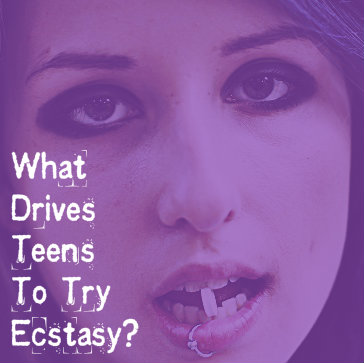 The full chemical name of Ecstasy (MDMA) is methylenedioxymethamphetamine. Outside of very limited situations, manufacturers produce this substance illegally, and distributors also usually sell it outside of legal channels. The stimulant effects of Ecstasy produce alertness and high levels of energy, while the hallucinogen-like effects of the drug produce an impaired ability to track the passing of time and unusual sensitivity to sound and touch. In addition, the drug commonly produces a benevolent mental outlook and an increased sense of social/spiritual connection with others. Ecstasy users typically view these physical and psychological changes as the drug’s desirable effects.
The full chemical name of Ecstasy (MDMA) is methylenedioxymethamphetamine. Outside of very limited situations, manufacturers produce this substance illegally, and distributors also usually sell it outside of legal channels. The stimulant effects of Ecstasy produce alertness and high levels of energy, while the hallucinogen-like effects of the drug produce an impaired ability to track the passing of time and unusual sensitivity to sound and touch. In addition, the drug commonly produces a benevolent mental outlook and an increased sense of social/spiritual connection with others. Ecstasy users typically view these physical and psychological changes as the drug’s desirable effects.
The use of Ecstasy is heavily associated with attendance at parties or dances that feature some form of electronic music; however, use can also take place in a range of other settings. The drug disrupts the body’s ability to regulate its internal temperature. In combination with the high, external body heat levels commonly found at the parties and dances where Ecstasy use occurs, this temperature dysregulation can lead to a dangerous, sometimes lethal condition called hyperthermia, which sets in when the body’s temperature rises above a sustainable level. Additional, major short-term health problems associated with Ecstasy intake include seizures and the development of significant heartbeat instability. Typically, people who take large amounts of the drug in a short span of time have the highest risks for experiencing these problems.
Psychological Distress And Ecstasy
Psychological distress is a term used to describe the presence of a range of emotional states that can undermine a person’s sense of mental well-being. Examples of these emotions include nervousness, hopelessness, restlessness and a “down” mood. By itself, psychological distress does not constitute a diagnosable mental health disorder. However, the underlying effects of a distressed psychological outlook are known contributors to the development of a number of diagnosable mental illnesses, including schizophrenia, bipolar disorder, anxiety disorders and major depression. According to figures compiled by the federal Substance Abuse and Mental Health Services Administration (SAMHSA), young adults experience psychological distress considerably more often than middle-aged adults or elderly adults, and also receive help for their condition less often than adults in these age groups.
Social Environment, Past Drug Use – Factors In Ecstasy Use
In the study published in Addiction, researchers from five Australian institutions used an assessment of 204 young adults between the ages of 19 and 23 to look at the factors that contribute to the start of participation in Ecstasy use. At the beginning of the study, none of these adults had used Ecstasy; however, over 40 percent of them had been offered the drug at some point. Six months later, the researchers identified the participants who had eventually accepted an offer to take Ecstasy and examined the reasons for this change in behavior.
After completing their assessment, the researchers concluded that factors related to an individual’s social environment played the most prominent role in the onset of Ecstasy use among the study’s young adults. Specific factors cited include having social interactions with a lot of people who already use the drug and attending the electronic music/dance events classically associated with Ecstasy use. The presence of the symptoms of psychological distress also played a meaningful role, as did a previous history of using marijuana or other forms of cannabis. However, these factors did not rise to the same level of importance as social environment.
How Study Results Can Help Ecstasy Drug Education
The authors of the study published in Addiction believe that their research can play a role in efforts aimed at curbing the use of Ecstasy and warning users about the drug’s major pitfalls. If successful, such efforts would likely have two components: a large-scale education campaign designed to reach broad segments of the population and a smaller, more targeted campaign designed to reach young adults and other individuals exposed to known risk factors for Ecstasy use.
Continued From – How To Handle A Loved One With An Addiction – Part 1
No one is born with a set of instructions on how to handle an addict. My perspective on what tends to work and what doesn’t, or perhaps better said, what can be helpful and what definitely is not, is born of my own experience as an addict. When I was ready to recover, and when I wanted it because it was what I knew I needed, it mattered little what people had said or hadn’t said. Nonetheless, looking back, I can see that some approaches were helpful while others resulted only in resentments I had to later work through in recovery.
What Is Helpful When Dealing With An Addict
By labeling these ideas “helpful,” I do not mean to imply that they will achieve the desired result of getting the addict to get clean. It is rather to say that these approaches are less likely to do harm and are more likely to help maintain a relationship of trust between you and the addict. In the end, the addict has to choose recovery because she wants it—not because you do.
Give Space
Addicts are already isolators, so it may appear that all they want is more and more space and time to be alone and practice their addiction. By giving space, I mean to say, emotional space. Keep the addict near and continue to engage to the degree that she is able or willing. But refrain from making every conversation or occasion together about the disease. The addict already feels the all-pervasiveness of it. You don’t need to keep bringing it up or checking in.
Share The Struggle
Many families of addicts make the mistake of keeping the issue a secret. This failure to reach out is generally based in the fear of the stigma attached to addiction and mental illness. But you need support and help in what may be a very long battle. Start by speaking with a pastor at your church or with trusted family friends. You do not need to be ashamed, this is no one’s fault. Addiction is painfully isolating not only for the addict but for the family who has to live and deal with the secret problem as well. Humble yourself to bring others in for support.
Get Help For You
Addiction touches and traumatizes the lives of everyone in its midst. Family members and even friends can benefit from counseling or a series of Al-Anon meetings. Become educated about the disease and learn what you can and cannot realistically expect from an addict. Learn to recognize patterns of manipulation and become aware of your own potential tendencies for co-dependency and enabling. Find out how to set proper boundaries around a person with addiction and get the support you need in sticking to them. Programs like Al-Anon are miraculous in helping those who live with addicts to understand what their role is in dealing with an addict.
While I was blessed with recovery from my anorexia, I watched another young girl lose her life to it at the age of 24. If the addict you love does not find recovery, you must not blame yourself. You cannot save someone who will not be saved. By the same token, you cannot, even by poorly chosen words and unthinking behavior, stop someone from seeking recovery and getting well if that is what they have decided to do.
There is no easy way to approach, handle or talk to a loved one struggling with addiction.
If you have an addict in your life, expect it to be difficult, awkward and uncomfortable. There will be good days and bad days, there will be small successes followed by perhaps greater setbacks. You will be pushed to your emotional limit and you will be forced to face your own inability to change a person you love. You will be wholly incapable of making him see that what you want is what’s best for him.
Helping Those Dealing With Addicts
Dealing with addicts isn’t intuitive. We don’t simply discern how to get through to them or how to interact with them based on common sense or reason. While respecting addicts as people, it will help the non-addicts in their midst to understand that reason, good sense, morality and self-preservation are no longer part of a framework within which they operate or a common ground upon which to meet.
But that doesn’t mean we write addicts off as crazy and give up hope. Having been an addict myself, I had a lot of people around me trying to help or cure or fix me in different ways. From the vantage point of recovery, I can now look back and comment on what was helpful and what wasn’t. Even a decade later, I remember how the people around me treated me when I was drowning in the despair of my addiction. While nothing you say will make or break an addict’s chances of recovering, there are ways of communicating and interacting that are harmful and pain-inducing, and there are better, more helpful ways of trying to relate to a person who is indeed quite sick.
What Not To Do When Dealing With An Addict
Guilt Trips
Yes, the addict is making everyone’s life difficult and causing a lot of unnecessary pain and suffering. She breaks plans, she fails to keep her commitments, she is unreliable and unpredictable. And guess what: she already knows it. Asking things like, “Do you realize what you are doing to your mother?” or, “Don’t you understand how you are hurting us?” are not helpful. The addict, though selfish in the extreme, is not oblivious to the pain, difficulty and chaos she is bringing into the lives of those around her. But she is not able to stop it. A guilt trip presupposes that the person being guilted is acting deliberately or out of malice. It assumes that he or she has some control over the offending behavior. An addict does not.
Bargaining
You’ll do anything, make any promise, as long as the addict will agree to stop the addiction and get help. But the addict is powerless to take you up on that offer. The addiction is boss. As appealing as your offer might be, it simply isn’t possible. Addicts are known for high-stakes gambling. They gamble their families, their jobs and anything good they can claim. They know what they have to lose and they do it anyway. They don’t do it because they don’t care; they do it because the illness is in fact that powerful and enslaving.
Endless Pleading And Cajoling
This is also known as nagging and it is never helpful or effective. It’s not that the addict doesn’t care, it’s that she cannot stop what she is doing on the basis of your wishes—even if she wanted to. The disease is a lot stronger than that. It’s a lot stronger than she is. In the end, the addict may tell you what you want to hear, but then go back to business as usual. She knows you think there is a problem. You don’t have to continue to restate it.
Implying Fault Or Agency
Loved ones must burn into their minds that both substance and process addictions are not choices that the addict is making. As a result, blaming addicts or implying that they are practicing their addiction simply because they are selfish and unloving is not only incorrect, but cruel. Understand that the addict is in the grip of something much bigger than him or herself. Addiction is an illness like diabetes or cancer. You may hope that addicts will take the appropriate steps to manage the condition, but it is unhelpful to imply that they do what they do on purpose.
Ignoring The Issue
If there is nothing that can be said to make an addict want to seek help, and if the nagging and the pleading are ineffective, does that mean it’s better to say nothing at all? Is it better to ignore the issue, make the best of it or hope it all just goes away? No. Something does indeed need to be said and maybe even done, but the ways in which you speak and act hold the difference between showing genuine love and support, and being a nuisance and a nag.
While your words and expressions of concern may not effect immediate change in the addict’s life, while they may not leave your chat promising to check into treatment, the addict will benefit from the knowledge that you cared enough to say something out of concern and love. Don’t pretend there isn’t a problem.
Continued In – How to Handle A Loved One With An Addiction – Part 2
A recent report from Olympia, WA, calls for a citywide conversation regarding the growing problem of heroin abuse plaguing the area—particularly drawing attention to the widespread issue of dirty needles. Heroin abuse is damaging in a host of more obvious ways—addiction, destroyed relationships, torched careers and the direct physical consequences—but one of the biggest issues comes from the use of unclean needles. This conversation isn’t a comfortable one for many citizens, but it’s a problem that will not go away, particularly with the epidemic-level prescription drug abuse gripping the nation.
Prescription Drugs: A Gateway To Heroin?
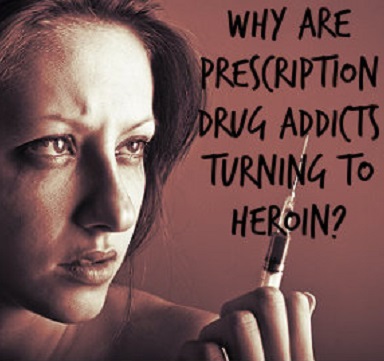 The prescription drug addiction crisis that America is facing has already been shown to have led users into heroin abuse. Understanding why requires some basic knowledge of the chemical similarity between the substances. The most effective painkillers are opioid drugs like oxycodone and hydrocodone (the active ingredients in OxyContin and Vicodin, respectively), substances derived from the opium poppy. This plant is the ultimate source of heroin, and the drugs are therefore effectively the same. Exceeding your doctor’s prescribed dosage heightens the narcotic effect of the substance, making it roughly comparable to taking a dose of heroin. This is why 12 million Americans used prescription painkillers non-medically in 2010 and why so many people become addicted and many of them overdose—but the supply isn’t always easy to come by.
The prescription drug addiction crisis that America is facing has already been shown to have led users into heroin abuse. Understanding why requires some basic knowledge of the chemical similarity between the substances. The most effective painkillers are opioid drugs like oxycodone and hydrocodone (the active ingredients in OxyContin and Vicodin, respectively), substances derived from the opium poppy. This plant is the ultimate source of heroin, and the drugs are therefore effectively the same. Exceeding your doctor’s prescribed dosage heightens the narcotic effect of the substance, making it roughly comparable to taking a dose of heroin. This is why 12 million Americans used prescription painkillers non-medically in 2010 and why so many people become addicted and many of them overdose—but the supply isn’t always easy to come by.
One of the unexpected downsides of cracking down on prescription drug abuse is that many people are left addicted to opiates but without the pills to satisfy their cravings. This problem is “solved” by many of the users by buying heroin — it’s easier to get and is cheaper than the medically legal versions prescribed by doctors.
Hidden Drug Problem
Olympia, WA, is experiencing an increase in heroin use. Previously, the heroin problem was primarily confined to grim alleyways in the inner city, but now—thanks in part to narcotic prescription medicines—it’s expanded into the suburbs, spreading across the city like a disease. While the obvious issues are the crimes associated with heroin abuse and the physical harm to the user, another immediate problem tied to increased heroin use is that of dirty needles littering the streets. The local paper, the “Olympian,” is calling for an open and frank discussion on the problem within the community.
Dirty Needles And Blood-Borne Viruses
Research from 2004 shows that one-fifth of HIV infections and the majority of hepatitis C infections were related to intravenous drug use, and one-quarter of America’s injecting drug users have HIV or AIDS. The reason is simple: with intravenous drug use, any case where two users share a needle represents a potential infection; the blood invariably remaining on the needle being plunged directly into the vein of the next user. In short, all needle-sharing is equivalent to unprotected sex. This is why needle-sharing is particularly ill-advised, but thinking realistically (particularly when accounting for the priorities of someone dependent on opiates) it’s clear that many users will take the risk to get their fix.
Needle Exchange Programs: Encouraging Addiction Or A Vital Service?
The problem with needle sharing is why needle exchange programs were created. The premise is simple: offer intravenous drug users a safe place to dispose of their used needles and offer them clean injecting equipment to reduce the risk of infections in the future. Olympia provides such a service and has for nearly 20 years. In 2012, about 950,000 dirty needles were collected and marginally fewer clean ones were distributed. The fact that the number of collections exceeds the number of distributions is a source of concern (the widespread discarded needles in locations like parks risk infecting children or non-using adults), but overall, the program undoubtedly reduces the numbers of blood-borne viruses.
However, critics argue that it isn’t right to distribute equipment to drug users who clearly have a problem, and that the programs merely allow them to continue on in addiction. This is an understandable criticism, but public health officials and those who operate the programs counter that the benefits of the programs outweigh the potential moral issues. Reducing the spread of HIV and hepatitis is a huge benefit, and it’s clear that the users aren’t only continuing to take heroin because they’ve been given free clean equipment; they are struggling with addiction and would continue using either way.
Harm Reduction As A Last Resort
It’s unreasonable to assume that every heroin user—or indeed every prescription drug user—will be able to quit effectively. Human history has repeatedly shown that not to be the case. This is why, in the most extreme cases, it’s better to focus on reducing harm as much as possible. The individual might be struggling to battle his demons and get clean, but does that mean we should stand by and do nothing while he risks HIV infection? It might make us feel like we live in a more harmonious world to pretend that these problems don’t exist, but it doesn’t improve the situation. If you turn a blind eye to the unnecessary suffering, you’d be fooling yourself to think it stopped happening.
See How Prescription Drug Abuse Is A Growing Problem On College Campuses – Click Here
The long-term risks for teens that abuse substances are increased likelihoods of adult addiction, developing certain cancers or heart disease and engaging in dangerous sexual behaviors that could result in contracting a sexually transmitted disease and/or an unplanned pregnancy. But there are also serious short-term risks, with the most serious being the increased likelihood of getting into a vehicular accident.
In addition, while many teens are advised not to drive a car while under the influence they may not use enough caution when considering the sobriety of another driver.
A recent study highlights the risk teens take when they drive a car or enter the car of a driver that is under the influence. Conducted by researchers at the Mailman School of Public Health at Columbia University, the study examined the risk of drug use and the risk of drug use combined with alcohol use and how such use impacted the risk of a fatal crash.
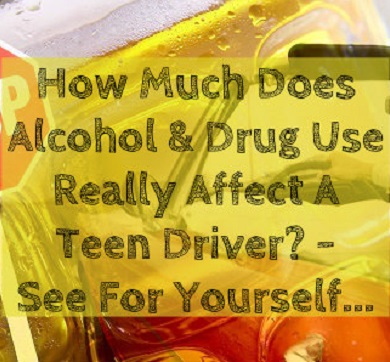
Drastic Increases In Fatal Crashes When Drugs Are Involved
The researchers found that there was a drastically increased risk of experiencing a fatal crash when drugs were involved in an accident, and this was particularly true when the drugs were used in addition to alcohol.
The study’s data was pulled from two national databases commissioned by the National Highway Traffic Safety Administration: the 2007 National Roadside Survey of Alcohol and Drug Use by Drivers and the Fatality Analysis Reporting System (FARS). FARS compiles investigation information for all vehicular crashes that resulted in a fatality within 30 days of the crash occurring on a public road.
This study is unique in its use of the two databases together to compile information about circumstances surrounding events, such as the individuals and vehicles involved.
The study, led by Guohua Li, MD, DrPH, professor of Epidemiology and director of the Center for Injury Epidemiology and Prevention, found that 31.9 percent of all drivers implicated in fatal crashes tested positive for at least one drug. Of those interviewed at roadside, 13.7 percent tested positive for at least one drug. Overall, drivers that test positive were three times more likely to be involved in a fatal car crash, with the highest risk associated with depressants followed by stimulants.
The study also showed that blood alcohol levels were increased in 57 percent of those involved in fatal crashes, while 8.8 percent of the roadside interviews had an elevated blood alcohol level. Approximately 20 percent of the fatal crash drivers tested positive for alcohol consumption and one or more additional drugs. Among the roadside interviews, 2.2 percent tested positive for alcohol and another drug.
Alcohol Increases Fatal Car Crashes By 13 Times!
The risk of involvement in a fatal car crash increased 13 times for those that tested positive for alcohol only, two times for those that were drug-positive and 23 times for drivers that were under the influence of both drugs and alcohol.
The authors of the study note that drugs may be detectable in a driver’s blood test that may not be causing impairment. In addition, the authors say that the study does not account for various levels of tolerance that may be exhibited among individual drivers, making it difficult to measure drug impairment.
Decreased Risks When Parents Talk With Their Teens
The findings highlight the importance of talking with teens about the risks of driving a vehicle while under the influence or entering a vehicle in which the driver has been using.
Parents that explain the risks and dangers can help their child make an informed decision.
When you look at the numbers, it can be discouraging to see how many teenagers continue to experiment with drugs and alcohol as this often leads to addiction. What most teens have difficulty comprehending is how this behavior could affect them for the rest of their lives.
Types Of Drugs Teens Experiment With
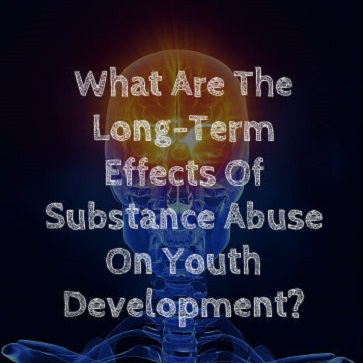 Just over one million American teenagers are addicted to illegal drugs, with another 915,000 addicted to alcohol. Even if they’re not addicted, an alarming number of teens are regularly using, with over half of high school seniors reporting having experimented with drugs and close to 30 percent having tried something other than marijuana, like heroin, cocaine, prescription drugs, inhalants, sedatives and mind-altering hallucinogens. The highest rate (19.9 percent) of illegal drug use occurs between 18 and 20 years, with the next highest rate (16.4 percent) happening between 16 and 17.
Just over one million American teenagers are addicted to illegal drugs, with another 915,000 addicted to alcohol. Even if they’re not addicted, an alarming number of teens are regularly using, with over half of high school seniors reporting having experimented with drugs and close to 30 percent having tried something other than marijuana, like heroin, cocaine, prescription drugs, inhalants, sedatives and mind-altering hallucinogens. The highest rate (19.9 percent) of illegal drug use occurs between 18 and 20 years, with the next highest rate (16.4 percent) happening between 16 and 17.
Alcohol use affects more than 10 million teens, with 5.1 million regularly binge drinking, which is defined as downing more than four or five drinks during a single sitting. Not far behind is inhalant abuse, with 25 percent of all teens 10- to 17-years-old saying they have friends who inhale dangerous fumes from things like paint, computer cleaner or glue.
Teen Drug Use Can Have Negative Effects For Years To Come
Unfortunately, the bad choices made in youth can haunt for years to come. The brain undergoes vital development during adolescence. Not since infancy has their brain been changing and forming with such rapidity.
Drug use can disturb the proper development of the prefrontal cortex in the brain. This area of the brain is responsible for important functions like organization, risk assessment, impulse control, consequence prediction and planning. But the limbic system, corpus callosum, hippocampus and cerebellum are all still forming and vulnerable to the changes wrought by drugs. Functions like emotional control, goal-setting and memory/recall are all still developing, and drug use could cause permanent problems in these areas.
Studies have repeatedly shown that heavy marijuana use damages key brain functions for years, with some researchers believing the changes are permanent. Processes like critical thinking, planning and complex attention are all shown to be diminished by heavy marijuana use. Girls seem to experience longer-lasting ill-effects, but both females and males show problems with myelin sheath formation, which affects brain signaling.
MDMA, which also goes by Molly and ecstasy, is associated with sensations of euphoria and social bonding, which is why it’s popular with young people attending large group gatherings such as concerts and dance clubs. Ironically, lowered serotonin levels as long as seven years have been observed in laboratory animals after they’ve been given MDMA, with serotonin closely associated with emotional happiness.
Alcohol causes harm to adolescent brains as well, especially binge drinking. Heavy drinking in teens has been shown to lower their ability to problem solve and understand spatial relationships, as well as memory and vocabulary impairment. And just like drugs, alcohol affects the limbic system, meaning emotional well-being is disrupted. In fact, there appears to be a connection between drinking and behavioral problems due to a lack of emotional control — researchers just aren’t sure which problem came first.
Using drugs and alcohol during adolescence can have serious and long-lasting results, with neurological development issues, impaired social development and addiction. And all of these problems can easily follow teens into adulthood.
Read More About The Effects Of Teen Substance Abuse On Families


